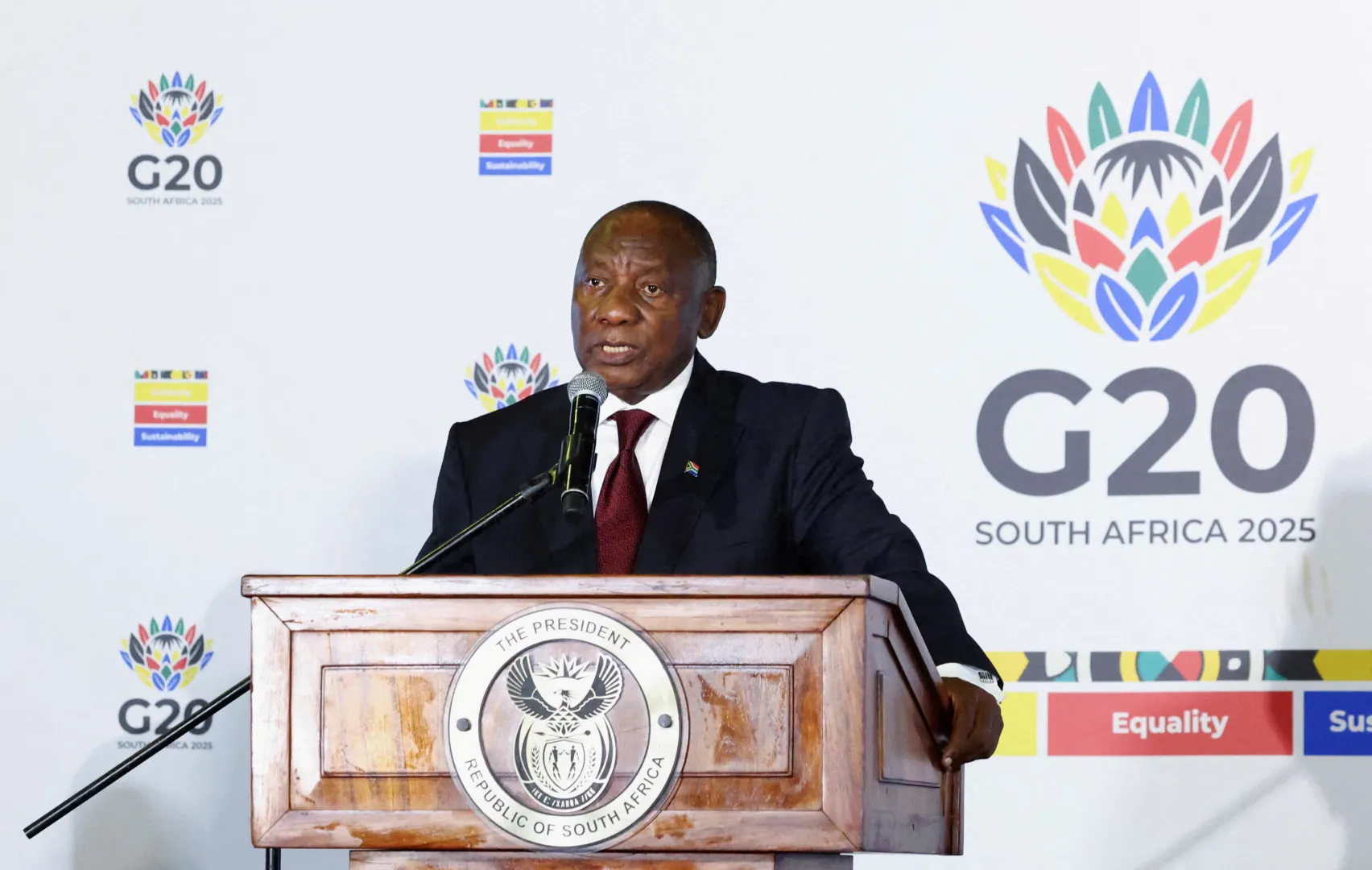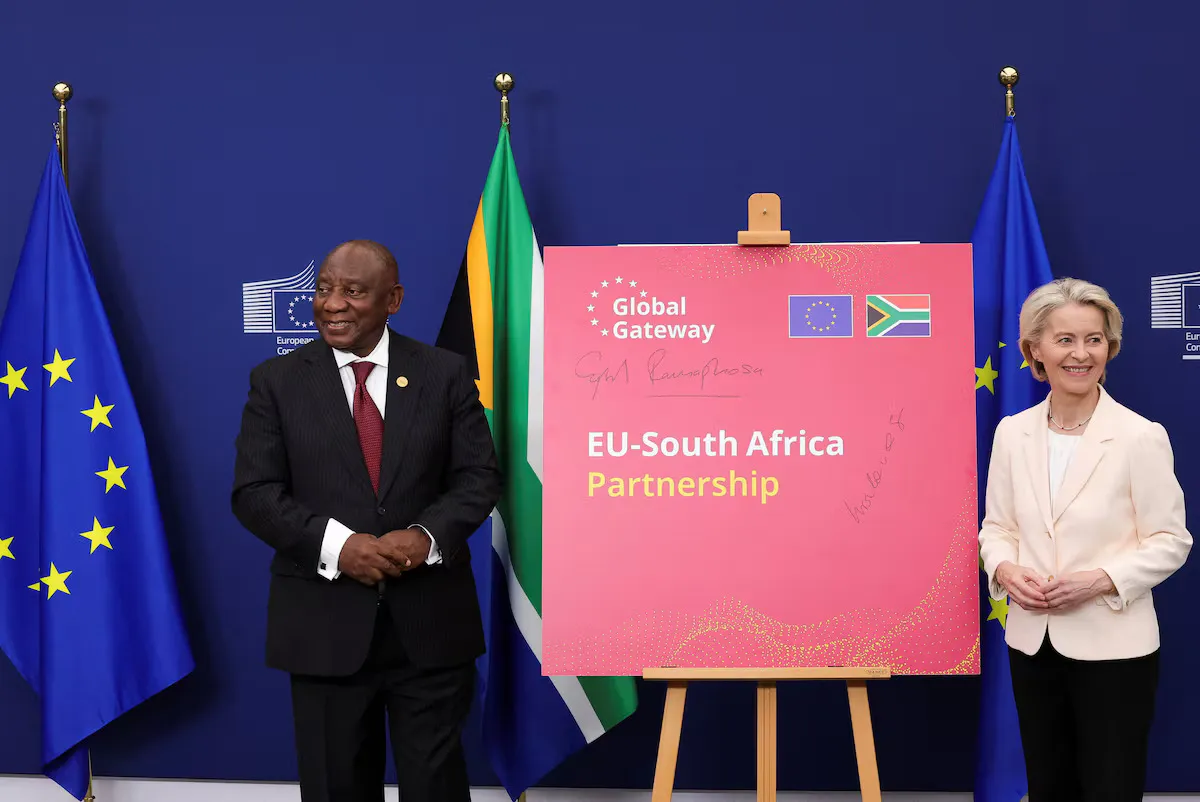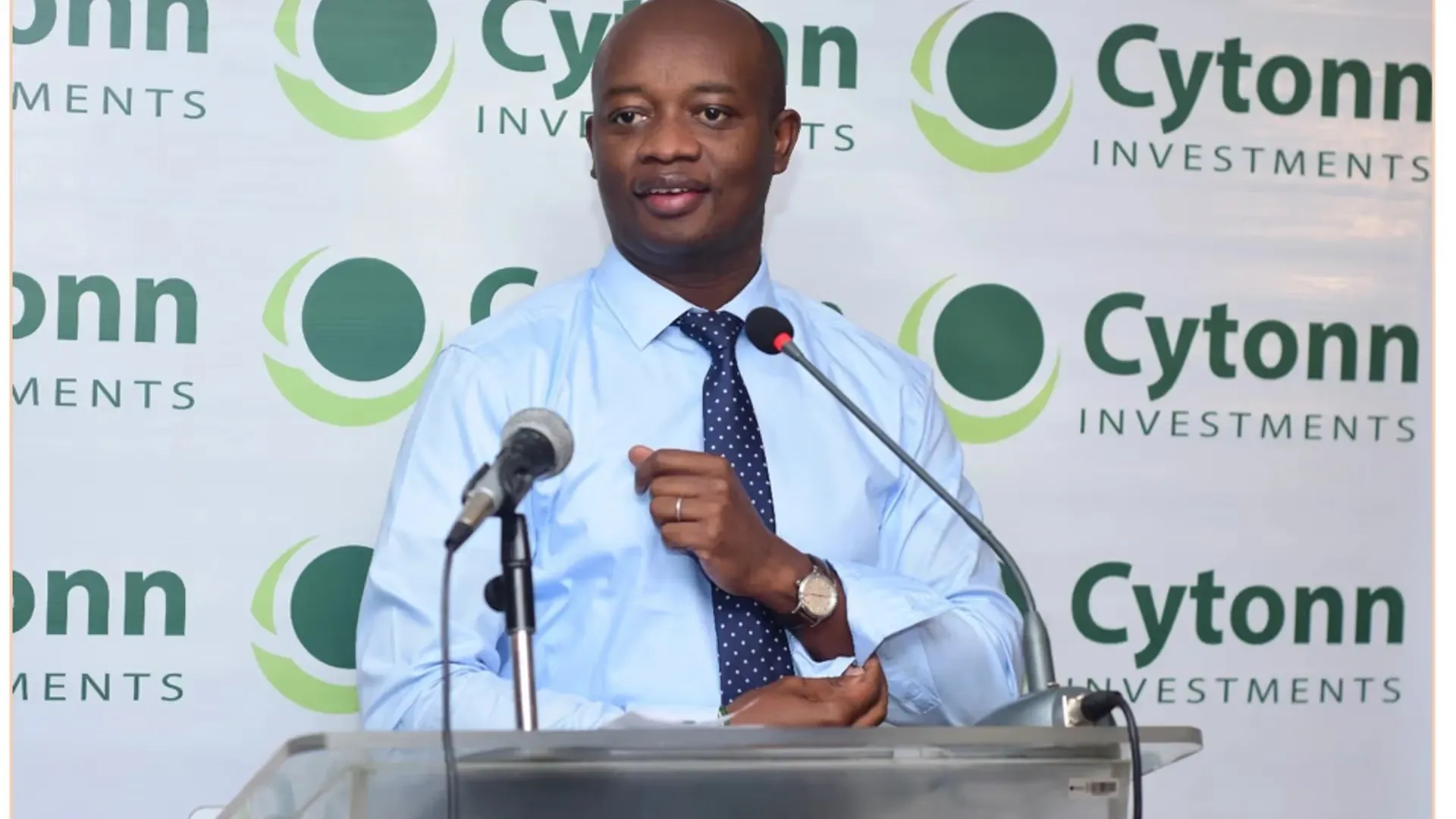The World Bank has revised Kenya’s economic growth projection for 2025 upward to nearly 5 percent, citing encouraging signs of recovery in the construction sector across East Africa’s largest economy. This upward revision, announced on Monday, November 24, 2025, represents a significant boost to Kenya’s economic outlook and reflects improving conditions in key industries that had struggled under fiscal pressures in previous years.
Build the future you deserve. Get started with our top-tier Online courses: ACCA, HESI A2, ATI TEAS 7, HESI EXIT, NCLEX-RN, NCLEX-PN, and Financial Literacy. Let Serrari Ed guide your path to success. Enroll today.
Construction Sector Leads Economic Recovery
According to the development lender’s latest comprehensive economic assessment, several of Kenya’s main industries, particularly the crucial construction sector, experienced significant difficulties throughout 2024, partly as mounting concerns about the government’s deteriorating fiscal position created uncertainty that dampened private sector investment and stalled major infrastructure projects. However, the World Bank’s new Kenya Economic Update report indicates that this troubling trend has decisively begun to reverse during the first half of 2025, with construction activity showing robust recovery momentum.
“Signs of recovery are emerging,” the report stated, emphasizing that the notable rebound in construction activity during the January-June 2025 period had successfully offset a concurrent slowdown in the manufacturing sector, which continues to face challenges including high energy costs, supply chain disruptions, and subdued domestic demand. The construction sector’s resurgence has been driven by a combination of resumed government infrastructure spending, increased private sector real estate development, and the completion of stalled projects as contractors receive delayed payments.
Upward Revision from Previous Projections
The improved economic outlook translates into a revised growth projection of 4.9 percent for 2025, representing a substantial upgrade from the World Bank’s May 2025 forecast of 4.5 percent. This 0.4 percentage point upward revision, while seemingly modest, represents billions of shillings in additional economic activity and demonstrates improving confidence in Kenya’s economic trajectory. The development lender projects that Kenya will maintain this enhanced 4.9 percent growth rate over the subsequent two years, suggesting that the current recovery is viewed as sustainable rather than a temporary spike driven by one-off factors.
This growth rate, if achieved, would place Kenya among the faster-growing economies in Sub-Saharan Africa and would mark a significant acceleration from the subdued growth rates experienced during the challenging 2023-2024 period when the country grappled with political protests, fiscal pressures, and economic uncertainty. The projected 4.9 percent expansion would also represent Kenya’s strongest performance since the pre-pandemic period, when the economy was consistently growing at rates approaching 6 percent annually.
Significant Risks Cloud the Economic Outlook
Despite the optimistic growth projections, the World Bank report identified several substantial risks that could derail Kenya’s economic recovery and undermine the positive momentum currently building in the construction and other sectors. These risks stem from both international trade dynamics and domestic fiscal policy constraints that continue to create uncertainty for businesses and investors.
The report specifically highlighted international trade uncertainty as a primary concern, including the impending expiry of the African Growth and Opportunity Act (AGOA), the preferential trade agreement that has provided Kenya and other eligible Sub-Saharan African countries with duty-free access to United States markets for thousands of products since 2000. AGOA, which is currently set to expire in September 2025 unless renewed by the U.S. Congress, has been instrumental in supporting Kenya’s apparel manufacturing industry, which employs tens of thousands of workers and generates hundreds of millions of dollars in annual exports.
The uncertainty surrounding AGOA’s renewal or replacement creates investment hesitancy, as companies that have built supply chains and production facilities based on preferential U.S. market access face potential disruption if the program lapses or is replaced with less favorable terms. Kenya has been actively lobbying for AGOA’s extension and is simultaneously pursuing bilateral free trade agreement negotiations with the United States as a potential alternative framework, though progress on these talks has been slow and complicated by changing U.S. political dynamics.
The report also cited Kenya’s ongoing fiscal consolidation efforts as a significant risk factor that could constrain government spending and dampen economic growth. Following years of expansive borrowing that pushed Kenya’s public debt to concerning levels—reaching approximately 70 percent of GDP—the government has committed to implementing fiscal discipline measures designed to reduce budget deficits, limit new borrowing, and create a more sustainable debt trajectory. While these consolidation efforts are necessary for long-term fiscal health and have been explicitly demanded by international lenders, they inevitably constrain government spending on infrastructure, social services, and other investments that support economic activity.
Public Debt Burden Constrains Development Spending
Government officials have consistently acknowledged that Kenya’s economic expansion trajectory has been significantly hampered by the country’s heavy public debt burden, which is characterized by extraordinarily high annual debt service obligations that have absorbed a disproportionate share of government revenue. According to Kenya National Treasury data, debt service payments have consumed upwards of 60 percent of ordinary revenue in recent years, leaving limited fiscal space for development expenditure on critical infrastructure, education, healthcare, and other productive investments that could accelerate economic growth.
This debt service burden has created a vicious cycle where limited fiscal resources constrain growth, which in turn makes the debt burden more difficult to manage relative to the size of the economy. The situation has been exacerbated by Kenya’s reliance on expensive commercial borrowing, including Eurobond issuances that carry interest rates substantially higher than concessional development finance, and by currency depreciation that has increased the shilling-denominated cost of servicing foreign-currency debt.
The debt challenge reached a critical juncture in mid-2024 when Kenya faced the prospect of defaulting on a $2 billion Eurobond maturity, ultimately managing to refinance the obligation through a combination of a new Eurobond issuance and syndicated loan facilities, but only after considerable market anxiety about Kenya’s debt sustainability. This episode highlighted the precarious nature of Kenya’s fiscal position and accelerated government efforts to reduce borrowing and implement fiscal reforms.
Innovative Financing Mechanisms for Infrastructure
Facing severe liquidity constraints that left numerous road construction projects abandoned due to unpaid contractor invoices totaling hundreds of billions of shillings, the government has turned to innovative but controversial financing mechanisms to mobilize resources. Most notably, Kenya has pursued loans securitized against the Road Maintenance Levy Fund (RMLF), a dedicated revenue stream generated through fuel levies collected from motorists at petrol pumps.
This securitization approach allows the government to access upfront financing backed by future levy revenues, providing immediate liquidity to pay road contractors who had abandoned construction sites throughout 2024 due to prolonged payment delays. The resumed contractor payments have enabled the restart of stalled infrastructure projects, directly contributing to the construction sector recovery that underpins the World Bank’s improved growth projections.
However, this financing mechanism has generated significant controversy and technical debates with international financial institutions. Critics argue that securitized borrowing of this nature effectively constitutes government debt that should be recorded on the national balance sheet, even though it may be structured through special purpose vehicles or other arrangements designed to keep it off the official debt statistics. The debate over classification has important implications, as including such obligations in official debt figures would worsen Kenya’s debt-to-GDP ratio and potentially trigger concerns among credit rating agencies and international lenders about fiscal transparency and debt sustainability.
One decision can change your entire career. Take that step with our Online courses in ACCA, HESI A2, ATI TEAS 7, HESI EXIT, NCLEX-RN, NCLEX-PN, and Financial Literacy. Join Serrari Ed and start building your brighter future today.
IMF Programme Negotiations Face Technical Obstacles
Kenya is currently engaged in intensive negotiations with the International Monetary Fund (IMF) to secure a new financial support programme that would provide both financing and the seal of approval that helps unlock additional resources from other development partners and commercial lenders. Following the completion of a previous IMF programme in 2024, Kenya has been seeking a successor arrangement that would provide continued policy guidance and financial support as the country navigates its fiscal challenges.
However, as the World Bank report noted, significant differences remain between Kenyan authorities and IMF technical teams on several critical issues. The most contentious disagreement centers precisely on the debt classification question—specifically, whether the securitized borrowing arrangements against dedicated revenue streams like the Road Maintenance Levy should be formally classified as government debt or can legitimately be treated as off-balance-sheet financing.
The IMF’s position, consistent with international public finance management standards and the institution’s Public Sector Debt Statistics Guide, generally holds that governments should consolidate all public sector obligations in debt statistics, including those that may be legally structured through special purpose vehicles or secured against specific revenue streams. The institution argues that comprehensive debt reporting is essential for accurate assessment of fiscal sustainability and for preventing the accumulation of hidden liabilities that could create future crises.
Kenyan authorities, facing enormous pressure to demonstrate fiscal consolidation progress while simultaneously maintaining infrastructure spending necessary for economic growth, have sought more flexible treatment that would allow certain financing arrangements to remain outside official debt calculations. This disagreement has delayed conclusion of a new IMF programme, creating uncertainty for investors and other development partners who typically coordinate their own support around IMF frameworks.
Structural Reform Agenda for Enhanced Competitiveness
Beyond the immediate macroeconomic outlook and fiscal challenges, the World Bank’s comprehensive economic report outlined an ambitious structural reform agenda that Kenyan authorities should implement to boost economic competition, support private sector investment, and accelerate sustainable economic growth over the medium and long term. These recommendations address deep-seated structural constraints that have historically limited Kenya’s economic potential despite the country’s many advantages including its strategic location, relatively developed infrastructure, educated workforce, and entrepreneurial culture.
The report identified multiple barriers to competition that currently constrain economic efficiency and discourage private investment. Most prominently, it highlighted the distortionary presence of more than 200 state-owned enterprises (SOEs) operating across virtually every sector of the Kenyan economy, from transportation and communications to manufacturing, financial services, and agriculture. Many of these parastatals benefit from undue competitive advantages including preferential access to government contracts, exemptions from certain taxes and regulations, implicit or explicit government guarantees, below-market access to credit, and protection from competition through regulatory barriers—all of which distort market dynamics and disadvantage private sector competitors.
The World Bank analysis suggested that many of these state-owned enterprises perform functions that could be more efficiently delivered by private sector firms operating in competitive markets, and that the government’s scarce financial and management resources would be better directed toward core public goods and services rather than commercial activities. The report implicitly endorsed accelerated privatization and commercialization of non-strategic SOEs, improved governance and performance management for enterprises that must remain in state hands, and elimination of regulatory advantages that create uneven playing fields.
Foreign Investment Restrictions Limit Capital Inflows
The World Bank report also criticized Kenya’s regulatory framework for maintaining excessive restrictions on foreign investment that limit capital inflows, technology transfer, and competitive pressure that could improve efficiency across the economy. While Kenya has historically positioned itself as relatively open to foreign investment compared to some regional peers, significant restrictions persist in sectors deemed strategic or sensitive, including land ownership, certain professional services, media, telecommunications infrastructure, and segments of financial services.
These restrictions, often justified on grounds of national security, cultural preservation, or protecting nascent domestic industries, have the effect of limiting the scale of foreign direct investment flowing into Kenya and may reduce the competitive pressure that drives incumbent firms to improve efficiency and innovation. The World Bank’s analysis suggested that many of these restrictions could be relaxed or eliminated without compromising legitimate policy objectives, while substantially improving the investment climate.
“There is significant room to make Kenya’s regulatory framework less restrictive to competition,” the development lender concluded, calling for comprehensive regulatory reform that would reduce barriers to market entry, eliminate unjustified restrictions on business operations, streamline licensing and permitting processes, and strengthen competition law enforcement to prevent anticompetitive practices by dominant firms.
Manufacturing Sector Challenges Persist
While the construction sector recovery has driven the improved growth outlook, Kenya’s manufacturing sector continues to face substantial headwinds that have prevented it from fully participating in the broader economic recovery. The sector has been hampered by multiple constraints including high electricity costs that make Kenyan manufacturers uncompetitive relative to regional and international competitors, unreliable power supply that requires expensive backup generation, inadequate transportation infrastructure that increases logistics costs, and limited access to affordable credit.
Kenya’s manufacturing sector, which contributes approximately 8-9 percent of GDP—well below the government’s industrialization targets—has struggled to achieve the expansion trajectory envisioned in national development plans. The sector faces intense competition from imports, particularly from Asian manufacturers that benefit from economies of scale and more favorable operating environments. Regional integration through frameworks like the East African Community Common Market has created opportunities but also intensified competition as Kenyan manufacturers face rivals from neighboring countries.
The government has attempted to support manufacturing through various initiatives including the establishment of Special Economic Zones offering tax incentives and streamlined regulations, programs to support small and medium enterprise development, and efforts to improve the business environment. However, progress has been constrained by limited fiscal resources, implementation challenges, and the broader macroeconomic difficulties that have dominated policy attention.
Regional Economic Leadership and Integration
Kenya’s economic performance carries significance beyond its national borders, as the country serves as East Africa’s economic hub and the region’s largest economy. Kenya hosts the regional headquarters of numerous multinational corporations, development organizations, and UN agencies, and its infrastructure—particularly the Port of Mombasa—serves as a critical gateway for landlocked neighbors including Uganda, Rwanda, Burundi, South Sudan, and eastern Democratic Republic of Congo.
The improved growth outlook for Kenya therefore has positive spillover effects throughout the region, supporting trade flows, cross-border investment, and regional integration initiatives. Conversely, Kenya’s economic challenges, including debt sustainability concerns and political instability, create risks for regional partners that depend on Kenyan infrastructure, markets, and financial services.
Kenya has been at the forefront of efforts to deepen East African Community integration, including implementation of the customs union, progress toward a monetary union, and initiatives to improve regional infrastructure connectivity. The country’s economic stability and growth trajectory significantly influence the pace and success of these regional integration efforts.
Conclusion: Cautious Optimism Amid Persistent Challenges
The World Bank’s upward revision of Kenya’s growth forecast to 4.9 percent provides welcome positive news for an economy that has faced sustained difficulties in recent years. The construction sector recovery that underpins this improved outlook demonstrates that progress is possible even amid fiscal constraints, and suggests that some of the government’s efforts to address infrastructure payment arrears and restart stalled projects are bearing fruit.
However, the substantial risks identified in the World Bank analysis—including international trade uncertainty, ongoing fiscal consolidation pressures, heavy debt service burdens, and persistent structural constraints—underscore that Kenya’s economic recovery remains fragile and vulnerable to both external shocks and domestic policy missteps. Achieving and sustaining the projected 4.9 percent growth rate will require careful policy management, continued fiscal discipline balanced against growth-supporting public investment, resolution of the IMF programme negotiations, and implementation of structural reforms that enhance competitiveness and attract investment.
For Kenya’s 50 million citizens, the ultimate measure of economic success will not be GDP growth statistics but rather improvements in employment opportunities, income levels, access to quality services, and overall quality of life. Whether the construction sector recovery and improved growth outlook translate into broadly shared prosperity will depend on policy choices regarding taxation, public spending priorities, social protection, and inclusive growth strategies that ensure development benefits reach beyond urban centers and privileged groups to encompass the majority of Kenyans who continue to face economic hardship.
As Kenya navigates the complex path toward sustainable economic growth, the World Bank’s revised projections provide a foundation for cautious optimism while emphasizing the substantial work that remains to address the country’s fiscal, structural, and competitiveness challenges. The coming months will test whether this optimism proves justified or whether new shocks—domestic or international—derail the fragile recovery and force yet another downward revision to growth expectations.
Ready to take your career to the next level? Join our Online courses: ACCA, HESI A2, ATI TEAS 7 , HESI EXIT , NCLEX – RN and NCLEX – PN, Financial Literacy!🌟 Dive into a world of opportunities and empower yourself for success. Explore more at Serrari Ed and start your exciting journey today! ✨
Track GDP, Inflation and Central Bank rates for top African markets with Serrari’s comparator tool.
See today’s Treasury bonds and Money market funds movement across financial service providers in Kenya, using Serrari’s comparator tools.
Photo source: Google
By: Montel Kamau
Serrari Financial Analyst
24th November, 2025
Article, Financial and News Disclaimer
The Value of a Financial Advisor
While this article offers valuable insights, it is essential to recognize that personal finance can be highly complex and unique to each individual. A financial advisor provides professional expertise and personalized guidance to help you make well-informed decisions tailored to your specific circumstances and goals.
Beyond offering knowledge, a financial advisor serves as a trusted partner to help you stay disciplined, avoid common pitfalls, and remain focused on your long-term objectives. Their perspective and experience can complement your own efforts, enhancing your financial well-being and ensuring a more confident approach to managing your finances.
Disclaimer: This article is for informational purposes only and does not constitute financial advice. Readers are encouraged to consult a licensed financial advisor to obtain guidance specific to their financial situation.
Article and News Disclaimer
The information provided on www.serrarigroup.com is for general informational purposes only. While we strive to keep the information up to date and accurate, we make no representations or warranties of any kind, express or implied, about the completeness, accuracy, reliability, suitability, or availability with respect to the website or the information, products, services, or related graphics contained on the website for any purpose. Any reliance you place on such information is therefore strictly at your own risk.
www.serrarigroup.com is not responsible for any errors or omissions, or for the results obtained from the use of this information. All information on the website is provided on an as-is basis, with no guarantee of completeness, accuracy, timeliness, or of the results obtained from the use of this information, and without warranty of any kind, express or implied, including but not limited to warranties of performance, merchantability, and fitness for a particular purpose.
In no event will www.serrarigroup.com be liable to you or anyone else for any decision made or action taken in reliance on the information provided on the website or for any consequential, special, or similar damages, even if advised of the possibility of such damages.
The articles, news, and information presented on www.serrarigroup.com reflect the opinions of the respective authors and contributors and do not necessarily represent the views of the website or its management. Any views or opinions expressed are solely those of the individual authors and do not represent the website's views or opinions as a whole.
The content on www.serrarigroup.com may include links to external websites, which are provided for convenience and informational purposes only. We have no control over the nature, content, and availability of those sites. The inclusion of any links does not necessarily imply a recommendation or endorsement of the views expressed within them.
Every effort is made to keep the website up and running smoothly. However, www.serrarigroup.com takes no responsibility for, and will not be liable for, the website being temporarily unavailable due to technical issues beyond our control.
Please note that laws, regulations, and information can change rapidly, and we advise you to conduct further research and seek professional advice when necessary.
By using www.serrarigroup.com, you agree to this disclaimer and its terms. If you do not agree with this disclaimer, please do not use the website.
www.serrarigroup.com, reserves the right to update, modify, or remove any part of this disclaimer without prior notice. It is your responsibility to review this disclaimer periodically for changes.
Serrari Group 2025











